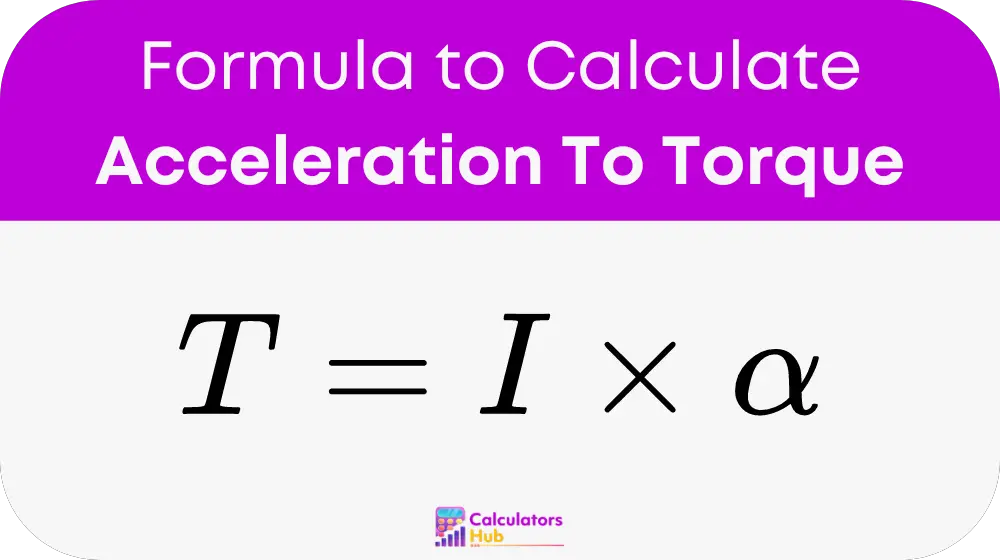The Acceleration To Torque Calculator calculates the torque needed to achieve a desired angular acceleration for a rotating object. Torque is the rotational equivalent of force, and it is a critical parameter in the design and analysis of mechanical systems involving rotation. This calculator simplifies the complex process of determining torque by using a straightforward formula, making it easier for users to obtain accurate results quickly.
Formula of Acceleration To Torque Calculator
To calculate the torque (T) required to achieve a certain acceleration (a) for a rotating object, use the following formula:

Where:
- T = Torque (in Newton-meters, Nm)
- I = Moment of Inertia (in kilogram-square meters, kg·m²)
- alpha = Angular Acceleration (in radians per second squared, rad/s²)
The moment of inertia (I) is a measure of an object's resistance to changes in its rotation and depends on the mass distribution of the object. Angular acceleration (alpha) is the rate of change of angular velocity.
Common Terms and Conversion Table
Here's a table of common terms and conversions that can be helpful when using the Acceleration To Torque Calculator:
| Term | Definition | Conversion |
|---|---|---|
| Torque (T) | A measure of the force that can cause an object to rotate about an axis. | 1 Nm = 0.73756 ft·lb |
| Moment of Inertia (I) | A measure of an object's resistance to changes in its rotation. | 1 kg·m² = 23.730 ft·lb·s² |
| Angular Acceleration (alpha) | The rate of change of angular velocity. | 1 rad/s² = 57.2958 deg/s² |
| Newton-meter (Nm) | A unit of torque. | 1 Nm = 0.73756 ft·lb |
Example of Acceleration To Torque Calculator
Let's walk through an example to illustrate how the Acceleration To Torque Calculator works.
Problem: Calculate the torque required to achieve an angular acceleration of 5 rad/s² for a rotating object with a moment of inertia of 2 kg·m².
Solution:
Using the formula:
T = I * alpha
Substitute the values:
T = 2 kg·m² * 5 rad/s²
T = 10 Nm
So, the torque required is 10 Nm.
Most Common FAQs
The moment of inertia is crucial because it determines how much torque is need to achieve a certain angular acceleration. A higher moment of inertia means more torque is required.
No, this calculator is specifically design for rotating objects. For linear motion, different formulas and calculators are used.
The results are highly accurate as long as the input values (moment of inertia and angular acceleration) are precise. It's essential to use accurate measurements for reliable results.